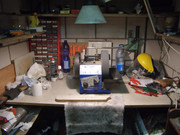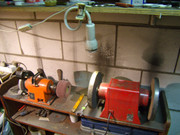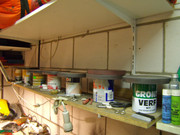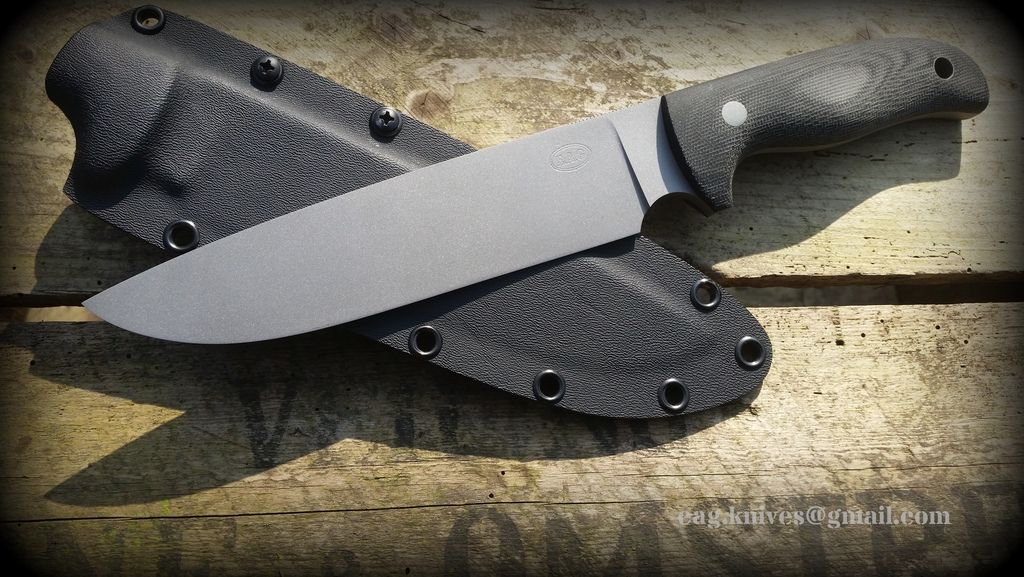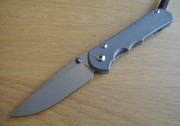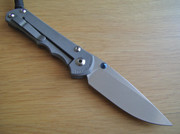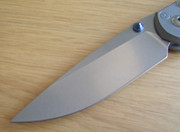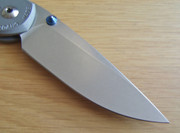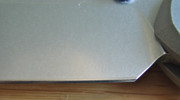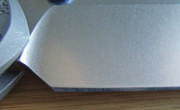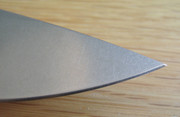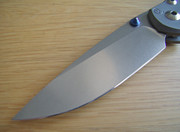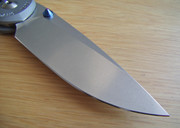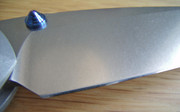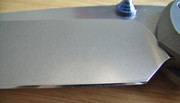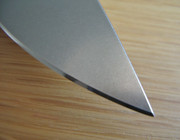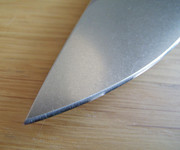When writing my review of the Forever SC-16WB ceramic knife (also in this forum) i found that the same company also produces titanium hybrid knives.
According to their website these blades consist of sintered titanium mixed with ceramic particles for increased wear resistance, as well as some silver for it's anti-bacteriologic properties.
Of course i had to buy one, in this case also from a Japan based E-Bay dealer for 49.99 US dollars including shipping from Japan to the Netherlands.
For testing purposes i chose one with the same dimensions as the ceramic knife i already have.













Now about 10 years ago the German manufacturer Böker seems to have used the same material in knives, only then it was called Cera-Titan, and it was sold in Europe under their own name.
Here is a picture of the Böker version with ziricote wood handle and & blade that looks very much the same like my Forever Titanium Hybrid knife:

I remember that back in the day i could not improve on the factory sharpness of the Cera-Titan material.
Never did it become sharp enough to shave armhair; slicing standard copy paper was about the best i could do with a Tormek 2000 fitted with an SG-250 stone as well as a belt sharpener with probably aluminum oxide belts (can't remember for sure).
Now the Forever website claims that their Titanium Hybrid / Cera-Titan knife performed 5 x better than a 63 HRC carbon steel knife and 42 x better than a 57 HRC stainless steel knife, and the testing to prove this was done according to international standard BN EN ISO 8442-5 (better known as the Catra test), where synthetic cards containing 5 % quartz are cut with a special machine, like in this YouTube clip:
http://www.youtube.com/watch?x…cl=84503534&v=WpIRLMdWsiE
While good Catra results are certainly nice to know, in real day-to-day use of a knife however many other variables play a significant role in how well and how long an edge performs, so i intend to find out how this titanium hybrid material will do in my own use.
The first problem encountered is the factory edge on my knife, which just as the earlier mentioned Böker example is only able to slice copy paper.
In no way is it able to shave my arm hair.
Since i don't feel like using the knife with this edge i will first try to sharpen it with my current sharpening equipment.
I will post my findings in this topic and put the knife to use in my kitchen, and my experiences there will also be posted here.
Specs:
Titanium Hybrid knife for right hand use (non-logo side is flat, while the logo side has 4 recessed area's, a wide saber grind and a 70/30 edge)
Overall length: 27,6 cm
Blade length: 15,7 cm
Blade material: Titanium Hybrid (Cera-Titan)
Blade thickness: max. 1.52 mm
Thickness behind the edge: 0.5 mm
Factory edge angle: 25/26 degrees inclusive
Edge finish: rather coarse
Sharpness: can slice copy paper
Edge irregularities can be felt on a finger nail and seen through a loupe.
Handle material: black polypropylene (heat resistant up to 120 degrees Celcius)
Weight: 71 grams







































